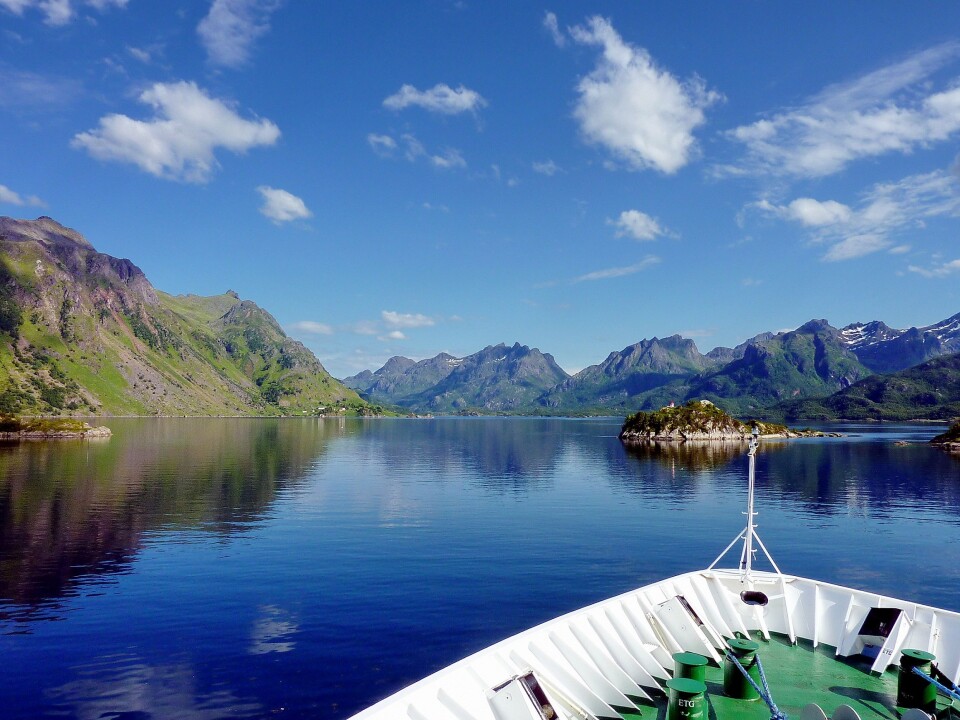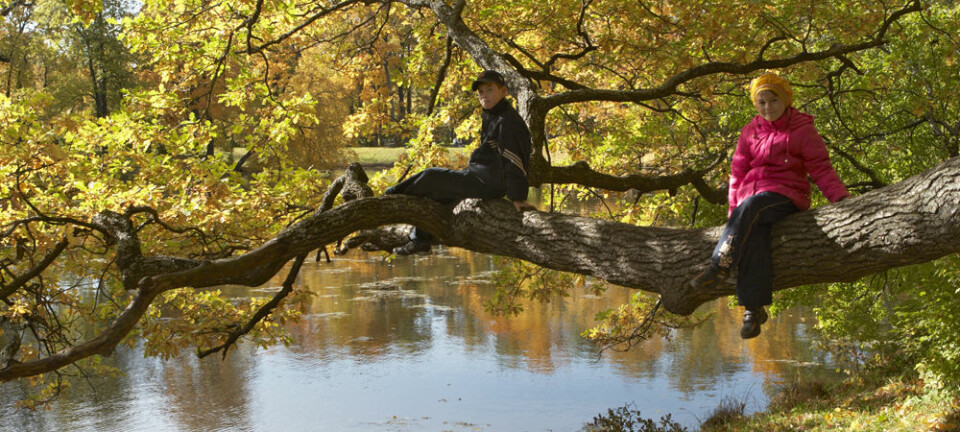![Some of the older persons who watch the slow-TV programmes such as NRK’s Sommertoget [Summer Train] feel that these enable them to take trips they couldn’t have taken otherwise. (Photo: Thomas Hellum / NRK)](https://image.sciencenorway.no/1447205.webp?imageId=1447205&width=960&height=548&format=jpg)
Slow-TV boosts national identity and traditional values
OPINION: Those who watch are most engaged in video shots of Norwegian nature and in getting to know the country.
The Norwegian Broadcasting Corporation (NRK) has done it again. More slow-TV. This time they are running a train to some places that haven’t been exposed earlier.
It started in 2009 when NRK fastened cameras and positioned camera operators and TV journalists on the train running between Oslo and Bergen. They followed up this success with 135 hours of live TV from Hurtigruten, the cruise ferry that traffics the Norwegian coast from Bergen up to Vadsø in the far arctic north. The latter drew over 1 million viewers – as many as the number who watches the most popular programmes on Norway’s main channel, NRK1.
The programmes have been successful on the channel that has broadcasted them, NRK2, accruing more viewers than the channel usually gets.
Older viewers
Despite such success, half the Norwegian population has not watched any, or nearly any, slow TV, according to a quantitative analysis made at Lillehammer University.

The categories of viewers show clear differences in slow-TV popularity. The great divider in this context is age. Slow-TV is no big hit with the younger crowd. The tendency – as it is for NRK programmes in general – is for the elderly (49+) to watch more slow TV broadcasts than those in the 18-29 age group.
The younger segment watches less linear TV than the elder, preferring to use streaming services such as Netflix, HBO etc. It follows that younger viewers are less likely to randomly end up watching slow-TV, according to a study based on individual interviews in the Bergen region with the younger age group and those aged 49 and up.
In fact, the younger adults have generally just watched such TV because it was turned on when they were visiting parents and grandparents.
Men watch the most
Another discovery might seem unexpected. One would think men prefer speed and action while women are more content with calmer programmes. But that wasn’t what we found.
The train programmes are most popular among women. One which followed a boat trip up the Telemark Canal and through its locks attracted the female eye, but both men and women in equal numbers watched much of the coastal cruise, Hurtigruten.
It was hard to find any clear pattern regarding the viewers’ education levels and incomes. The TNS Gallup poll has looked into the TV viewers’ opinions about life and society, dividing them into groups along those lines. This made the differences clearer.
People classified as “traditional” watch the most slow-TV, followed by the “community oriented” and the “moderate”. Viewing was scantest among the “modern” and to some degree the “individually oriented”. The finding of such differences is not unusual, as these are also linked to life phases related to age. The traditional are older and more established.
Taking the public along
When talking to foreigners about the popularity of slow TV we usually encounter the question: “Why watch it? Isn’t it like watching grass grow or paint dry?”
Normal viewer estimates don’t cover such questions. So we asked people who watch these programmes why they are important for them.
In the interviews some of the younger people expressed their perplexity as to what the point was in watching a train roll up and down the tracks from Bergen to Oslo when you could take the train yourself. But many of the older persons took the opposite view. They liked the fact that they could travel without actually leaving recliners and sofas.
These shows take the public on a trip to places they haven’t been but would like to visit. Or they see places they have been to and thus re-live earlier travels. Some of the elder crowd said: “It is somewhat the feeling of travelling without doing it. Maybe not that I feel I’m really there, but I experience something I haven’t, or am reminded of places I’ve been by watching it.”
The young are too busy
Time is also an element and the younger persons mention this as a reason for ignoring slow-TV. They have so much else going on in their lives they cannot give priority to watching a boat or a train moving from A to B. They point out that they would watch more slow-TV if they did have more time, like maybe when they reach retirement.
However, the younger people who were interviewed like the idea of slow-TV, which they consider to be a genre for the older generation. They appreciate the fact that NRK makes programmes that the elderly can relate to – those who have grown up with NRK, which used to have a monopoly when Norway only had one TV channel.
The concept of slow-TV can be applied to other things than Norwegian nature and culture and thus reach out to other viewer groups. The best example to date is the programme Hele Norge bygger – minutt for minutt in which various groups built Norway in the computer game Minecraft. Whereas the average age of the other slow-TV productions has been about 60, that particular programme drew a crowd of viewers with an average age of 38.
Nature appreciation
In the quantitative study we asked for various reasons why people watched the programmes. The responders were given a list of 14 reasons, varying from liking nature filming, the cultural initiatives presented, the pace of the programme, the fact that many people were talking about the programme or simply that they were drawn to watching it.
Looking at the different segments of the population individually, nature was the main attraction. Among those who had watched slow-TV, 79 percent answered that the nature shots were rather important or very important.
Nature was followed by “getting to know the country”, “shows national identity”, “recognise places where I have been”, “the culture presented”, “live broadcast” and “the crowds of people and everyday life”. From 58 to 67 percent picked these factors as quite important or very important.
Few thought the talk about the programme in their circle of colleagues, friends and family, in the media or social media was of much importance. Of medium importance for viewers were the categories “the tempo of the programme”, “felt associated with the places”, “was drawn into the programme” and “wanted to see if I knew anyone”.
Norway on display
Summing up and interpreting these discoveries, it appears as if the display of Norwegian nature, learning about the country’s geography, culture and identity are the main reasons why slow-TV programmes get watched.
They give Norwegians (at least the older ones) a confirmation of the most important Norwegian values linked to nature and culture and an experience of shared national identity. The more specific traits of the programmes – the laid-back tempo, that much of it was live coverage or that they got hooked and drawn into the programme appear to be less important justifications for watching. And three out of four said they did other things simultaneously while watching, or that they went back and forth between watching television and doing something completely different.
Suited for NRK
Slow-TV is a good idea for a non-commercial broadcaster to the general public like NRK. It helps depict various parts of the country and portrays plenty of popular activities. A person can learn about the country, recognise places and also see unfamiliar ones. The programmes bolster national identity and traditional values.
We have concentrated on the programmes that present a journey from start to finish. Other slow-TV programmes focus on traditional activities, such as the ones on firewood, salmon fishing and singing psalms. We can assume that these help sustain the same values and attract the same types of television viewers.
--------------------------------------------
Read the Norwegian version of this article at forskning.no
Translated by: Glenn Ostling


































